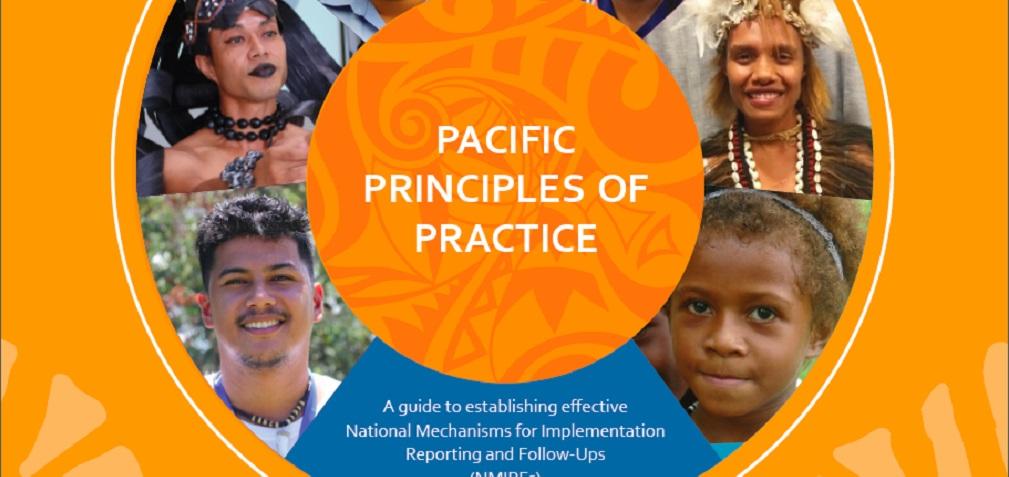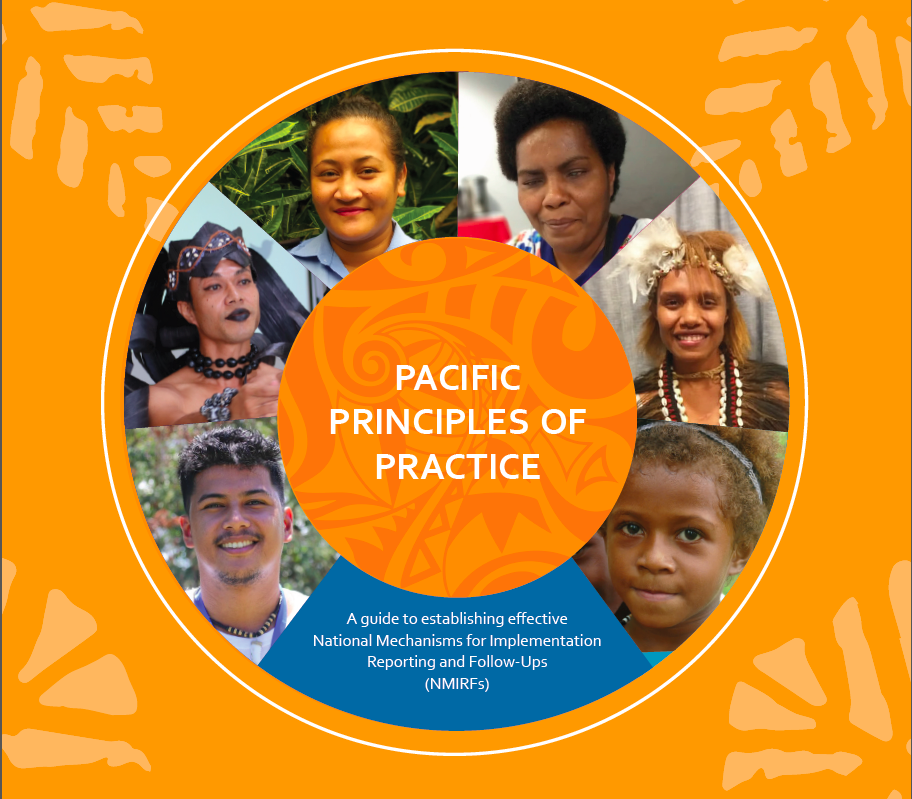(Article disponible en anglais uniquement)
![]() This post originally appeared on the Universal Rights Group website. It has been reprinted with permission
This post originally appeared on the Universal Rights Group website. It has been reprinted with permission
Introducing ‘The Pacific Principles of Practice’ for effective national implementation
BY MARC LIMON, EXECUTIVE DIRECTOR OF THE UNIVERSAL RIGHTS GROUP BEYOND THE COUNCIL, BLOG, BLOG, IN FOCUS: DOMESTIC IMPLEMENTATION OF UNIVERSAL NORMS
On 3 July a Human Rights Council side event was held at the Australian Mission in Geneva. Except for the fact that it was a COVID-era ‘hybrid’ side event, held simultaneously offline and online, at a superficial-level the side event was much like any other. Yet dig a little below the surface and the event was extraordinary – or rather, it marked an extraordinary, even historic, moment for the universal human rights system: the launch of the world’s first intergovernmental principles designed to guide States in the effective implementation of their international human rights obligations.
In many ways it is shocking that it has taken the international community over 70 years to take this step. The truth is that while the international community has invested enormous time and energy in building the international human rights system over the past seven decades, it has expended far fewer resources in considering how best to implement the obligations, commitments and recommendations generated by that system – or in tracking and measuring impact on the enjoyment of human rights. Though in truth we simply do not know the degree to which domestic implementation is happening, this lack of focus on the part of world governments has given rise to the idea that a significant ‘implementation gap’ has been allowed to develop between universal values and local realities.
Notwithstanding this unpromising history, the past five years has seen important signs that things may be changing. During that time, far more thought and attention has been paid, at national and international levels, to the ‘mechanics’ of implementation – the systems and processes through which States translate universal norms into local reality. Central to that push has been the emergence, especially in small developing countries, of so-called ‘national mechanisms for implementation, reporting and follow-up’ (NMIRFs) – single, streamlined legal bodies that collate, manage, coordinate and track progress with the implementation of recommendations from all international human rights mechanisms (together, in some cases, with those from regional mechanisms). Some of these States, supported by the Office of the High Commissioner for Human Rights and NGOs including the Universal Rights Group, have also begun to develop sophisticated implementation and reporting software, to support the work of their NMIRFs. In 2018–2019, this revolution at national level began to be recognised and encouraged at UN level. A ‘group of friends on domestic implementation/NMIRFs’ (coordinated by Portugal) was created in Geneva which, inter alia, uses the UPR to recommend the establishment or strengthening of NMIRFs in all member States; sub regional groups (e.g. the Pacific Community) began to hold meetings to share good practices; and Paraguay and Brazil secured the adoption of Human Rights Council resolution 42/30 establishing a process of regional consultations to drive the quantitative and qualitative evolution of NMIRFs, as the keystone of a global human rights ‘implementation agenda.’
The negotiation and endorsement of the Pacific Principles of Practice (the Pacific Principles) – a guide to help States establish effective NMIRFs, is a landmark step along this increasingly promising new road.
For the first time ever, a group of UN member States (Fiji, Federated States of Micronesia, Kiribati, Republic of Marshall Islands, Palau, Papua New Guinea, Samoa and Vanuatu) have come together to agree what effective national implementation (as well as tracking and measuring of progress) means in practice – and how States can achieve it.
The Pacific Principles seek to respond to the challenges and lessons learnt shared at the Pacific Regional NMIRF Dialogue held in Nadi, Fiji in April 2019. They were agreed and endorsed by Pacific Island States, and elaborated with support from the Regional Rights Resource Team (RRRT) of the Pacific Community and the Universal Rights Group, and are intended to ‘contribute to the global conversation on effective implementation of human rights obligations and development commitments.’
They are based around three broad principles and a number of sub-clauses:
- There is no ‘one size fits all’ approach to NMIRFs;
- NMIRFs should be permanent and be established by the executive or legislature; and
- NMIRFs shall been given a structure, mandate and resources to effectively coordinate and track national implementation of human rights and other overlapping frameworks.
Seven sub-clauses help elaborate the third principle (above). These include guidance to States on:
- The composition of effective NMIRFs (e.g. including the participation of government ministries and agencies, statutory bodies, parliamentarians, the judiciary, civil society, national human rights institutions, traditional and religious leaders/groups, national statistics offices and the private sector);
- The ideal mandate for an NMIRF, including a list of responsibilities such as: ‘receiving, clustering, planning, tracking and centrally managing all human rights recommendations,’ ‘centralised collection of data and information management to continuously track progress and identify implementation gaps,’ ‘regular convening of all national implementing actors,’ ‘making all recommendations, past reports and implementation status publicly available in primary national languages,’ ‘regular reporting to parliament,’ and public ‘consultations on all draft reports and implementation plans;’
- How to connect human rights implementation with SDG implementation and reporting;
- The utilisation of technology to facilitate the aims and functions of an NMIRF and to simplify reporting;
- Working methods – including terms of reference;
- Secretariat support – ‘a secretariat should be established and written into the terms of reference;’ and
- Resources – ‘an NMIRF should be provided with adequate resources to fulfil its mandate by the government.’
Pacific Island States are already world leaders in identifying innovative ways to strengthen human rights implementation and reporting (e.g. Samoa was one of the first countries in the world to establish an NMIRF, while earlier this year the Pacific hosted the first ever regional meeting of a UN Treaty Body – the Committee on the Rights of the Child). It is hoped that the Pacific Principles will guide all Pacific Island States in building world-class NMIRFs – mechanisms that will drive progress with human rights and the achievement of the SDGs.
Yet these first intergovernmental principles on national implementation and the establishment of NMIRFs are likely to have implications far beyond the Pacific. It is hoped that they will be taken up by States participating in the process of regional NMIRF consultations established by Council resolution 42/30 – inspiring other sets of regional NMIRF principles and, ultimately, a set of universal principles similar to the Paris Principles on national human rights institutions (NHRIs), and thereby helping to finally bridge the long-standing ‘implementation gap’ between universal norms and local reality.
The full text of the Pacific Principles of Practice is available here.

